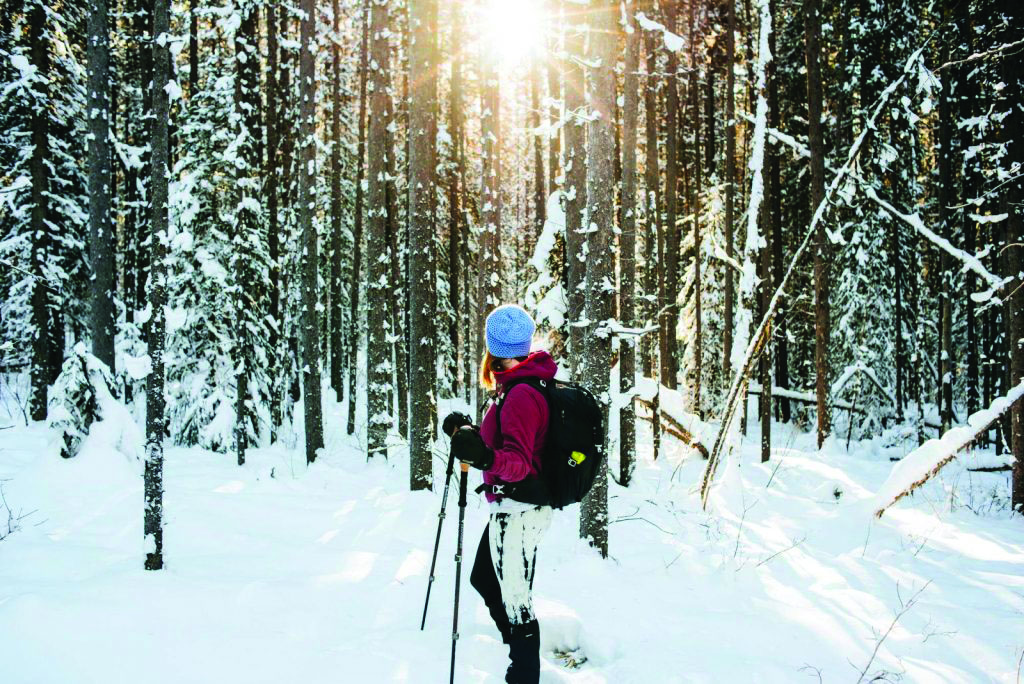By Bill Deaton
Most folks that enjoy the outdoors, by this time of the year are itching for warmer days after three months of wintery weather. Snow enthusiasts, on the other hand, typically can be found offering sacrifices to Jack Frost for one more nor’easter to blanket the region before the inevitable spring thaw. Thankfully, for all parties involved, March tends to be fickle. While spring-like conditions sometimes may tease, keep in mind that wholly 21 days of the month lie in winter.
Truth be told, I generally log ten or so days of skiing during March and I’d be lying if I said I didn’t strap my snowshoes on at least five times through the course of the month. Largely for those facts, I have a hard time relegating this month to the season of “spring”, but the warmer days do tend to afford me the luxury of not having to bundle up like an Eskimo in order to enjoy myself. If the weather permits, and usually it does, you can ski in short sleeves and snowshoe wearing shorts. If you’re willing to embrace the craziness of March, it can be the best of both worlds. Just keep in mind a few things:
- Keep your gloves on. You don’t necessarily need heavy, insulated gloves, but lighter liner gloves or ones made of a thin fleece should be a requirement. Spring snow is still cold and the daily freeze-thaw cycle that goes on can turn the snow into tiny, icy shards that could leave your dukes a bloody mess if you take a spill.
- Take your poles snowshoeing. Hidden dangers can be found under the snow more so during this time of the year than anytime else. Flowing water will erode the surface from the bottom up creating gaps over creeks and streams. If you hear water under the snow, use the poles to probe for pockets. If you do bust through, your poles can help you get out of the drink and back on your feet.
- Take your shades, lip balm, and sunscreen. Sunlight is getting stronger as we head towards the equinox and the light bouncing off the snow is getting brighter and can do more damage than it did a few weeks ago.
- Stay dry below. Waterproof boots for hiking or snowshoeing are a must. Knee high waterproof gaiters are probably a good idea as well. You could ski in your shorts, but a lightweight pair of rain pants can serve as an ideal springtime substitute for snowpants. They will keep you cooler and offer more protection from the slush and ice crystals.
- Pack a tarp. It doesn’t have to be a big one. Have something waterproof to sit on while taking a break from your snowshoe trek. If you need to remove your boots to change socks or shed layers, you also have a changing platform to stay out of the snow.
- Be prepared for thin cover. On the slopes, rocks and grass can present obstacles especially later in the day. Unless you like dripping P-Tex into your bases and tuning your edges, try to steer clear. If you are snowshoeing, take some webbing or enough cord to fashion a make-shift carrier if you have to defrock your snowshoes and haul them over your shoulders. More than once I’ve snowshoed up the shady side of a hill only to find a mile of are trail on the sunny side downhill.
While it can be hit-or-miss for snowshoeing this month, most of the local ski areas should be going strong at least through mid-March. Enjoy the fleeting days of winter! Soon enough you’ll have to stash the snow gear in the basement for a few months.


